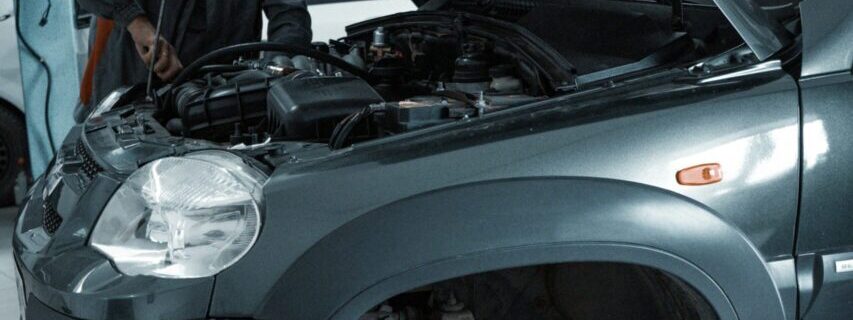Undercarriage car damage includes any damage that impacts the undercarriage of your car—or the parts of your car that are directly exposed to the road—including your exhaust system, suspension, and gas tank.
When inspecting your car for damage, most people think about visible damage to the body of their car and internal engine damage. If you nick your door on a post, accidentally back into a barrier, or see smoke coming from your hood, you immediately know where you should check for damage.
But what about the last time you hit a speed bump too quickly or drove down a road filled with potholes? While you can’t easily see damage underneath your car, undercarriage damage is important to look out for to keep your car in optimal condition.
It’s not always easy to spot undercarriage car damage, so Jerry, the car insurance comparison and trustworthy super app, has created a complete guide on everything you need to know. We’ll go over what your car’s undercarriage is, how it can get damaged, and the undercarriage damage signs you should look out for.
What is a car’s undercarriage?
The undercarriage of a car describes the system of parts underneath a car’s main cabin that is directly exposed to the road. Some larger parts that live in a car’s undercarriage are the exhaust system, suspension, and gas tank.
A car’s undercarriage is meant to protect the bottom mechanics of a car, so these parts are built tough and designed to withstand continuous exposure to the road and outdoor elements. That said, it’s not unbreakable, which is why it’s important to keep an eye out for undercarriage damage.
What does undercarriage damage mean?
Undercarriage damage describes any kind of harm done to the underside of a car. The undercarriage is always exposed to the road, so it experiences constant wear and tear from debris, road conditions, and the weather.
What causes undercarriage damage
Your car’s undercarriage can become damaged in several ways. Here are the most popular causes of undercarriage car damage:
- Mud: If you regularly take your car off-roading, travel on dirt roads, or live in a rainy place, the mud that gets kicked up into your undercarriage from your wheels can cause damage. Mud holds moisture, so caked-on mud can cause parts of your undercarriage to rust.
- Salt: Salt undercarriage damage is most popular in cold-weather areas, where road salt is used to melt ice to keep driving conditions safe. Continuous exposure to salt can cause parts of your undercarriage to corrode, leaving important parts of your car vulnerable to further damage.
- Potholes: Hitting a pothole at a high speed can often be enough to seriously damage the undercarriage of your car. The impact can cause your car to hit asphalt, gravel, or dirt. This impact may lead to fluid leaks, exhaust damage, suspension damage, or cracks. Many times this type of damage is called bottoming out.
How to identify undercarriage damage
While it’s tough (and sometimes dangerous) to get underneath your car and look for visible damage, there are signs to look out for that may indicate your car’s undercarriage is damaged. Here are the most common signs of a damaged car undercarriage:
- Leaking fluid: If you notice pools of fluid underneath your car or even inside your car’s wheel wells, this could be a sign that part of your undercarriage is damaged.
- Strong oil smell: If you see or smell engine oil in or underneath your car, this could signify that part of your car’s undercarriage, such as an oil pan, is cracked and needs repairing.
- Steering problems: If you notice your car veering to the left or right while driving or find that your steering wheel is less responsive to turning, this could be a sign that part of your undercarriage, such as your car’s control arm or steering knuckle, is damaged and needs to be looked at.
- Visible scrapes or hanging parts: If you see scrapes around the base of your car or notice anything hanging down while parked, you’ve likely hit something on the road that’s caused damage to the undercarriage of your car.
If you suspect that your car has undercarriage damage, you should bring it to a repair shop as soon as possible. Keeping up with undercarriage maintenance is just as important as regular car maintenance.
How to save money on car insurance
Serious undercarriage damage could present you with an unexpected bill you’re not prepared to pay. But with Jerry, the top-rated insurance comparison app, you can save money on your premium while still getting great coverage, which puts you in a better position when the mechanic calls with surprise car damage.
It’s this simple: download the Jerry app or go to getjerry.com. In less than 45 seconds, Jerry collects all of your information from your existing insurer. Choose from competitive quotes from top insurance companies, and Jerry takes care of the rest—securing your new policy and helping you cancel your old one upon request.
No long forms. No calling around. No hard work. Just savings. The average Jerry user saves $800+ a year on car insurance. That’s enough to cover your next undercarriage maintenance bill!
FAQ
-
Is damage to the undercarriage of a car bad?
-
What’s the repair cost for undercarriage car damage?

Katherine Duffy is an insurance writer who has spent over half a decade in the professional writing industry. Katherine specializes in content geared toward the everyday driver, including advice on insurance companies and coverages, vehicle specs, and car maintenance. As part of her mission to create helpful and relatable articles, she has written over 550 pieces on car insurance and vehicle care. Katherine has also worked as a teaching assistant at Wilfrid Laurier University, where she obtained a degree in English Language and Literature. Katherine is currently pursuing her J.D. at Western Law.
Melanie Reiff is an expert insurance writer and editor with over half a decade of experience in professional writing. Guided by a lifelong love of storytelling, it’s Melanie’s mission to help people problemsolve by means of creative and engaging content. Melanie specializes in analyzing the ways in which society, technology, and culture intersect, previously working with clients in travel, technology, and social impact to tell their stories.
As an editorial team lead at Jerry, Melanie has translated her prior experience into creating and editing insurance content that can help drivers and homeowners find the solutions they need and make informed moves.
Prior to joining Jerry’s editorial team, Melanie worked as a freelance content marketing strategist and was the full-time director of choir at Rampart High School Acadamy in Colorado Springs.







